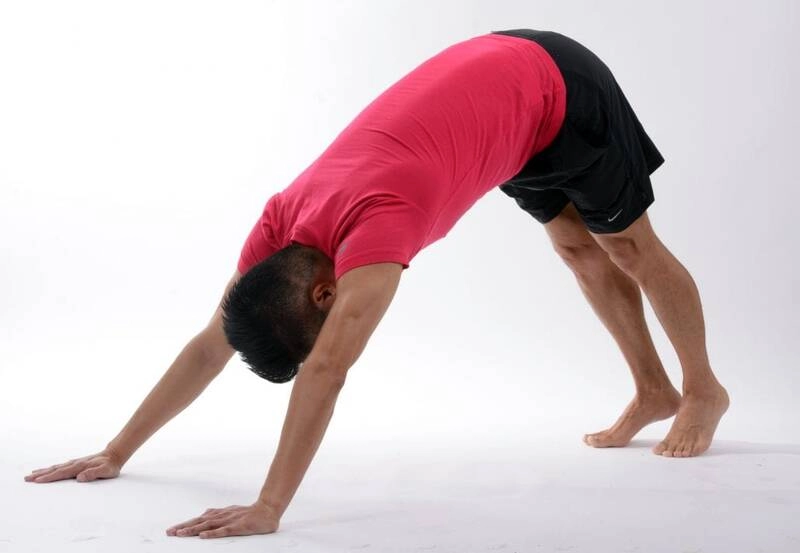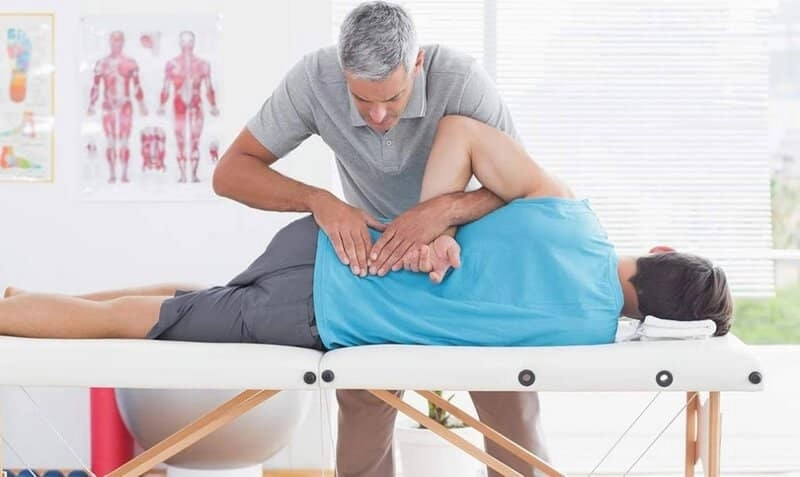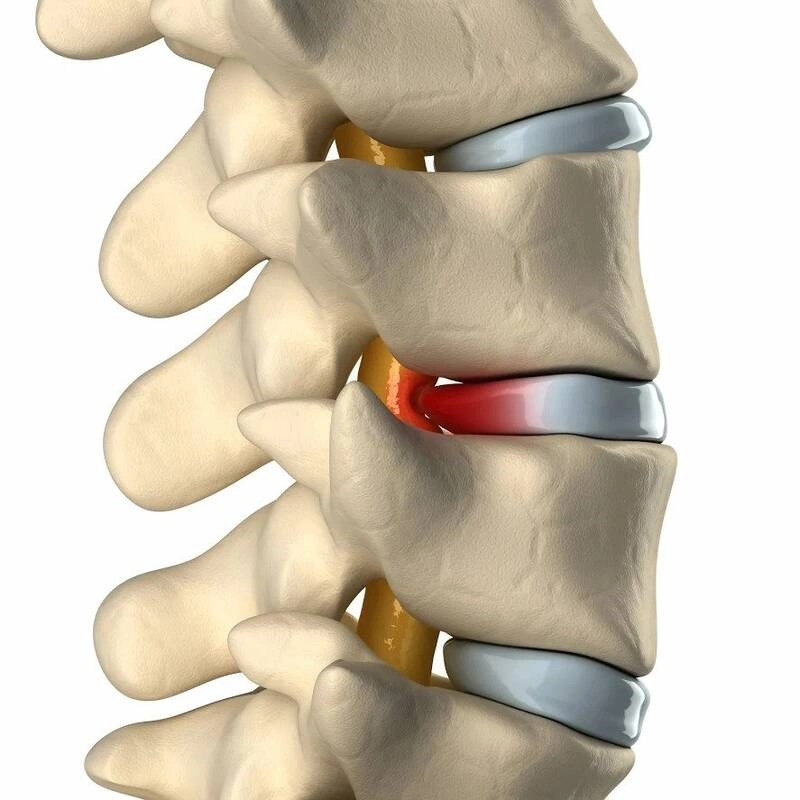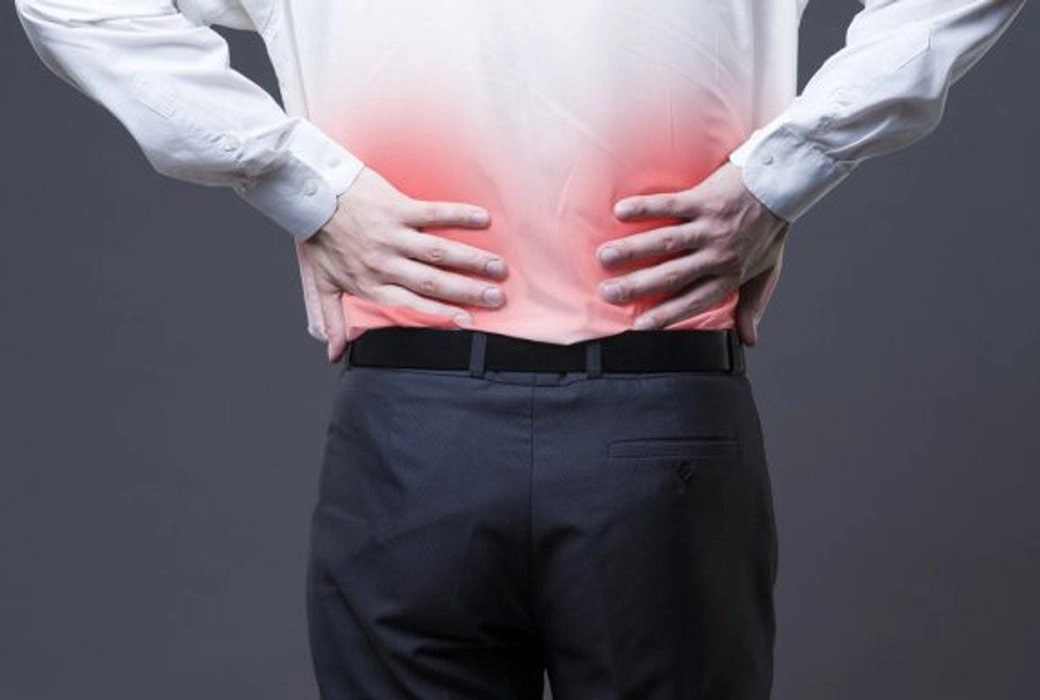When a herniated disc causes you pain it can be nearly impossible to find relief. Sitting down doesn’t seem to help. Neither does laying down. This can make every hour of the day an exercise in pain. Luckily, there are ways you can find relief both sitting and sleeping. Read on for tips from your Anchorage chiropractor and discover the best ways to sit and sleep with a herniated disc.
Relieving the pain from a herniated disc, whether while sitting or sleeping, is all about reducing the pressure on the disc. The location of the disc in the spine will affect the ideal position for you. But, no matter where the disc is located, there are ways you can relieve that pressure and the pain it causes.
Best Sleeping Positions for a Herniated Disc According to an Anchorage-based Chiropractor
Sleeping with a herniated disc is a whole other issue. Many people find that their herniated disc pain is worse at night. Fortunately, there are several positions that have helped countless herniated disc sufferers to sleep comfortably and pain-free.
The trick to sleeping with this painful problem is to find a position that prevents the disc from touching and irritating the nerve ending. The following methods are helpful for people with a herniated disc.
1) How to Sleep With a Herniated Disc in the Neck?
Sleeping with a disc herniation in the neck will depend on your preferred sleeping position. However, if you sleep on your stomach, we would advise you to change to side or back-sleeping. Stomach sleeping is not suitable for any part of your spine. Sleeping comfortably with a disc herniation in the neck is all about pillow thickness.
For side sleepers, use a thicker pillow.
-
- Your head shouldn’t be canted up or down in regards to your neck and shoulders while you sleep on your side. A pillow of the correct thickness will help keep your spine straight and the pressure off your discs.
For back sleepers, use a thinner pillow.
-
- While you sleep on your back, your neck should be in the same position as it is when you stand up straight. Allowing your head to be tilted upward by a thick pillow or downward by an overly thin pillow can put undue pressure on the spinal discs of the neck.
2) How to Sleep With a Herniated Disc in the Lower Back?
There are a few different tactics that work well for the most common location for herniated discs: the low back.
Back sleepers, use a towel under the low back.
-
- A rolled-up towel under the low back while you sleep can work wonders for back pain caused by a herniated disc. You can adjust the thickness of the towel until it feels right under your back. You’ll know it when you have it right.
Back sleepers, stack pillows or use a wedge under your lower legs.
-
- Placing stacked pillows or using a sleeping wedge made for back pain relief can do the trick. These make it easy to take the pressure off the lumbar spine.
- You may also try raising your legs and placing a towel or foam roll under your low back for maximum effect.
Side sleepers, stack pillows under your lower legs.
-
- This works well for sciatica due to a bulging disc. If you’re experiencing sciatica on the right side, sleep on your left side and place your knees and lower legs on the stacked pillows. Reverse it if you’re experiencing sciatica on the left side.
3) How to Sleep With a Herniated Disc in the Upper Back?
Sleeping with a herniated disc in the upper back is mainly about maintaining an optimal spinal position.
Ensure a proper position.
-
- Follow the tips above for sleeping with a herniated disc in the neck. Proper position of the neck is imperative to sleeping with a herniated disc in the upper back. You may also try putting a towel or small piece of foam under your lower back.
Try sleeping on your side.
-
- Sleeping on your side in a fetal position can take the pressure off of the upper spine and give you the relief you need to sleep without pain. However, to prevent the development of other problems, try to sleep with a pillow between your knees for the duration of your side-sleeping.
4) How To Sleep With A Thoracic Herniated Disc?
The thoracic spine is the area people often refer to as the middle or upper back. And while most disc herniations occur in the neck or the low back, it’s possible to have a herniated disc in the thoracic spine. This will require slightly different tactics for sleep.
The key to sleeping with a thoracic herniated disc is to make sure you decompress your spine. But how can you do this while sleeping? A couple of different ways:
Use pillows under your legs.
- Like sleeping with a herniated disc in the low back, the thoracic spine can benefit from a couple of pillows under your knees. Doing this helps pull your hips slightly up, which helps to decompress your spine. However, for this to be effective, you should do one other thing:
Make sure your head is in a neutral position.
- If the pillow under your head is too thick or thin, you could be slightly compressing your thoracic spine from the neck. A pillow that allows your spine to stay in a neutral position will do you well with a thoracic herniation.
- A neutral position is a way your head sits when you stand up straight: your ears over your shoulders and the bottom of your chin parallel with the ground. For best results, you should be sleeping with your spine in a neutral position.
The Best Sitting Positions for a Herniated Disc According to an Expert Chiropractor in Anchorage
Not all herniated discs cause pain. Sometimes there are no symptoms at all. But, when a herniated disc presses on the nerve in the spine, it can be extremely painful. While many people are concerned with relieving pain from a herniated disc while running or otherwise staying active, we can’t forget about sitting.
When you sit in certain positions, it puts pressure on that disc, causing it to press, or continue pressing, on the nerve. So the best thing you can do is try a few different positions until you find one that relieves the pain. If at all possible, it’s best to avoid sitting as much as you can. This will allow the disc to heal quickly. But, since that’s not always possible, here are some of the best ways to sit with a herniated disc.
1) How to Sit in a Car With a Herniated Disc?
Sitting in the car can be very painful with a herniated disc. Not only does sitting in a car tend to put pressure on the discs, but every bump and vibration can also send a painful twinge up your spine. The key to sitting in a car with a herniated disc is to maintain the natural s-curve of the spine. Here’s how.
Avoid a vertical seatback.
This may seem counter-intuitive, but you’ll want to allow the seat to recline a bit. With the seat reclined, keep your upper back pressed against the top of the seat. This will help you keep a hollow at your low back, therefore helping maintain the s-curve of the spine.
Use a rolled-up towel or pillow.
As an Anchorage chiropractor, I recommend placing a towel or pillow between your low back and the seat can also help you maintain the structurally-sound s-curve of the spine. This is best if you’ll be driving for 30-minutes or more. Simply adjust the towel or pillow until it feels comfortable. This is usually just above belt-level.
Use the footplate.
Nearly all vehicles have a footplate on the very left of the driver’s side footwell. When you press into the footplate with your left foot, you can leverage your hips back against the bottom of the seatback. This also helps keep the pressure off your discs.
2) How to Sit in a Chair With a Herniated Disc?
Many of the tactics for sitting in a chair with a herniated disc are similar to those for sitting in a car. The end goal remains the same: to maintain the s-curve of the back.
Use a rolled-up towel.
For most desk chairs, a rolled-up towel at the lower back is your best bet. Keep your shoulders back, your head above your spine, and your feet flat on the floor or slightly elevated above your hips.
Try a ball or an ergonomic chair. Sitting on an exercise ball can help relieve pressure on your spinal discs. The same can be said for one of the many types of ergonomic desk chairs out there. But, the type of chair you sit in only does some of the work. Ultimately, it still comes down to you to maintain the proper posture while sitting.
More than anything else, you want to be out of pain and get back to your normal life! This is completely understandable and the ultimate goal of all healthcare professionals, especially your chiropractor.
You just want that pain to stop, especially when you are trying to sleep at night! The following 5 strategies can offer serious pain relief before sleeping for those with herniated discs.
Other Tips for Those With a Herniated Disc
While it’s important to find a way to get through your day pain-free while you have a herniated disc, it’s also important to seek proper treatment. If left untreated, a disc may heal, but it’s only a matter of time before it happens again. Untreated herniated discs can lead to further issues or, at the least, recurrent disc herniation.
Studies have shown chiropractic care to be an effective means of treating herniated discs in the lower back, neck, and upper back. Chiropractors use safe, non-invasive, and drug-free modalities to treat herniated discs. A few of these include spinal adjustments, massage therapy, ultrasound therapy, traction, cold laser therapy, and lifestyle tips. Here at Better Health Alaska, we offer massage in Anchorage to complement other chiropractic care and other natural treatments.
a) Heat, Ice, and Related Modalities
Many people with herniated discs suffer from painful muscle spasms. These can frequently be relieved with heat packs. You can try different forms of heat therapy to see which method works best for you. Some people find that moist heat, such as a hot water bottle, works well for them while others find that the adhesive type of heat wraps, such as the kind sold in drugstores, provide them with enough heat to keep them comfortable all day.
If you have them available, saunas or Jacuzzi can also help to relieve muscle spasms. If you can find a comfortable position, a hot bath with Epsom salts is also a welcome relief.
Ice can also work well to stop the pain of a herniated disc, at least temporarily. Applying ice packs to painful areas can reduce swelling and limit inflammation. Always wrap an ice pack and use it for 10 minutes on, then 10 minutes off for best results.
Your chiropractor might suggest other modalities to help limit your pain, such as low-level laser light therapy, ultrasound, or chiropractic massage, depending on your exact situation.
b) The McKenzie Method
This is a comprehensive set of both evaluations and exercises that your chiropractor will oversee and teach you how to perform on your own. The chiropractor will perform an assessment to determine what movements cause the most pain and how these movements can be altered to decrease current pain levels while allowing healing measures to take place.
There are several different classifications of McKenzie therapy, but you will need a professional, such as your chiropractor, to guide you through the assessment and teach you the proper techniques, as well as the strengthening exercises that are designed to prevent future problems.

c) Anti-Inflammation Foods and Supplements
Inflammation causes pain. You can limit inflammation by eliminating foods that cause inflammation, as well as by following an anti-inflammatory diet.
You can also greatly reduce the pain of inflammation by consuming some anti-inflammatory supplements, such as:
- Ginger
- Curcumin
- Green Tea
- Magnesium
- Nutmeg
Your chiropractor can discuss the details with you and recommend which supplements might be best for you.
d) Chiropractic Care

Are chiropractors good for herniated disc pain? Yes, one of the best ways to reduce your herniated disc pain is to see your Anchorage chiropractor sooner rather than later! Through spinal manipulation, your chiropractor can shift pressure away from the affected area, improving healing time and reducing pain.
Your chiropractor can be especially helpful if your herniated disc is causing sciatic pain. By realigning the spine, it relieves pressure on the discs. Less pressure on the discs means they can move away from the nerves.
Your chiropractor is a professional who specializes in the nerves and complete musculoskeletal system of the body, so they understand what is causing your pain and how to effectively offer you pain relief while the body heals.
We hope this article helps you to relieve pain while sitting or sleeping with a herniated disc. You can also check out our article on how to naturally relieve herniated disc pain.
I Was Fine Yesterday!
While this statement can be true for those who were injured in a car accident or other type of injury, it is rare to have your back suddenly “go out.” Most of us simply choose to ignore some of the warning signs and red flags.
Diagnosing Back Problems
Before you can begin any type of program to heal your back, you need a diagnosis since back pain comes from many different problems.
Your chiropractor is a specialist in the musculoskeletal makeup of the body, especially the spine. As a specialist, the doctor will take a complete medical history, including the events leading up to the problem. A thorough physical exam will follow, as well as tests including an X-ray or an MRI. This will help the doctor determine the exact cause of your pain and what treatment program should be followed.
A Very Common Problem
If the doctor diagnoses you with a herniated disc, you might immediately think of surgery. In many cases, this isn’t necessary.
What Is a Herniated Disc?

Between the bones of the spine, called the vertebrae, there are small, pillow-like discs. These discs are there to prevent the bones from rubbing against one another and to absorb shock from activities such as running.
When an injury occurs to the spine or when too much pressure is placed on it, these discs can become so compressed that the outside layer breaks apart, allowing the softer inside of the disc to be pushed out, similar to a tube of toothpaste if you squeezed one end very hard.
This is sometimes called a ruptured disc. While you might hear the term “slipped” disc, this isn’t true since the disc cannot slip out from between the vertebrae.
What Are the Symptoms of a Herniated Disc?
While some people feel little or no pain, more common symptoms of a herniated disc include:
- Pain, sometimes intense, usually in the lower back
- Pain that can radiate from the back down the legs
- Pain in the lower back when sitting or when bending forward
- Muscle spasms
- Numbness or tingling in the legs or hands
- Stiff, painful neck
- Pain that becomes worse at night
- Muscle weakness
These symptoms can vary slightly depending on which disc is herniated and what nerve it is touching.
While most herniated discs occur in the lower back, they can occur anywhere in the spine, including the neck.
What Causes a Herniated Disc?
A disc can be damaged in accidents, such as car or motorcycle accidents, workplace accidents, or even from simply twisting or turning while you lift a heavy object.
Most herniated discs, however, are simply due to the normal wear and tear on the body. As we age, the discs in our spine become more brittle and they lose some of their water content, which makes them more susceptible to splitting.
Being overweight puts more of a strain on the spine, as well as living a sedentary lifestyle, which weakens the muscles which support the spine. While herniated discs are more common in men than women, they can happen to anyone at almost any age.
Can’t I Just Ignore It and Wait for the Disc to Heal?
While you could try and tough it out, there are complications that can occur with this method. A severely herniated disc can lead to permanent nerve damage, which can cut off the feelings in the lower back. This means you could lose control of your bladder and bowel functions.
How long for a herniated disc to heal without surgery? If you do nothing, a minimum of 4-6 weeks or longer. That’s a long time to have to deal with pain and be unable to do the things you want to do.
Another possible complication is called “saddle anesthesia.” Imagine all the places your body would touch on a saddle if you were riding a horse. This area around the inner thighs and groin area can become numb, which can also lead to a lack of feeling in the bowels and bladder.
This is why proper treatment by a qualified chiropractor, like those on our staff here in Anchorage, is so important!










